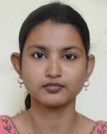Abstract:
The phenomenon of chondrogenic pattern formation in the vertebrate limb is one of the best studied examples of organogenesis. Many different models, mathematical as well as conceptual, have been proposed for it in the last fifty years or so. In this review, we give a brief overview of the fundamental biological background, then describe in detail several models which aim to describe qualitatively and quantitatively the corresponding biological phenomena. We concentrate on several new models that have been proposed in recent years, taking into account recent experimental progress. The major mathematical tools in these approaches are ordinary and partial differential equations. Moreover, we discuss models with non-local flux terms used to account for cell-cell adhesion forces and a structured population model with diffusion. We also include a detailed list of gene products and potential morphogens which have been identified to play a role in the process of limb formation and its growth.
Keywords:
mathematical models of chondrogenesis, reaction-diffusion equations, pattern formation, limb development
Affiliations:
| Chatterjee P. | - | other affiliation |
| Glimm T. | - | Western Washington University (US) |
| Kaźmierczak B. | - | IPPT PAN |





















